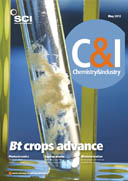Widespread adoption of paints and coatings containing photocatalytic titanium dioxide could improve air quality and health, both indoors and outdoors, according to researchers.
Recent studies show that surfaces treated with TiO2 photocatalyst are capable of killing up to 99.9% of surface bacteria, including MRSA and Staphylococcus aureus – major causes of hospital acquired infections, according to Cristal Global, a Saudi-based supplier of TiO2 technology.
Meanwhile, the US Food and Drug Administration is also reported to be evaluating the performance of a related TiO2 formulation for reducing levels of Pseudomonas aeruginosa – the bacteria responsible for respiratory failures that are the major cause of premature death among cystic fibrosis sufferers, says an undisclosed source.
‘If we can claim reductions in mould, mildew, other bacteria and volatile organic compounds and indoor pollutants, then asthma and respiratory conditions could be improved,’ claims Brian Pickett, Cristal’s director of performance chemicals.
TiO2-based photocatalysts have been around for years, in a variety of products from paints to floor tiles and ceramics. Used outdoors, Pickett says Cristal’s CristalACTiV formulation reduced NO by 60% and NO2 by 20%.
In a car park, a surface of just 100m2 painted with the photocatalyst was claimed to remove 22g NOx (NO and NO2) per year – equivalent to the amount emitted by a car driving more than 130km.
While details of Cristal’s specific colourless TiO2 technology are under wraps, it works similarly to other TIO2 technologies by harnessing the power of sunlight to convert organic pollutants to small amounts of CO2 and water.





